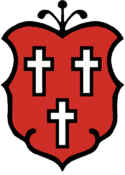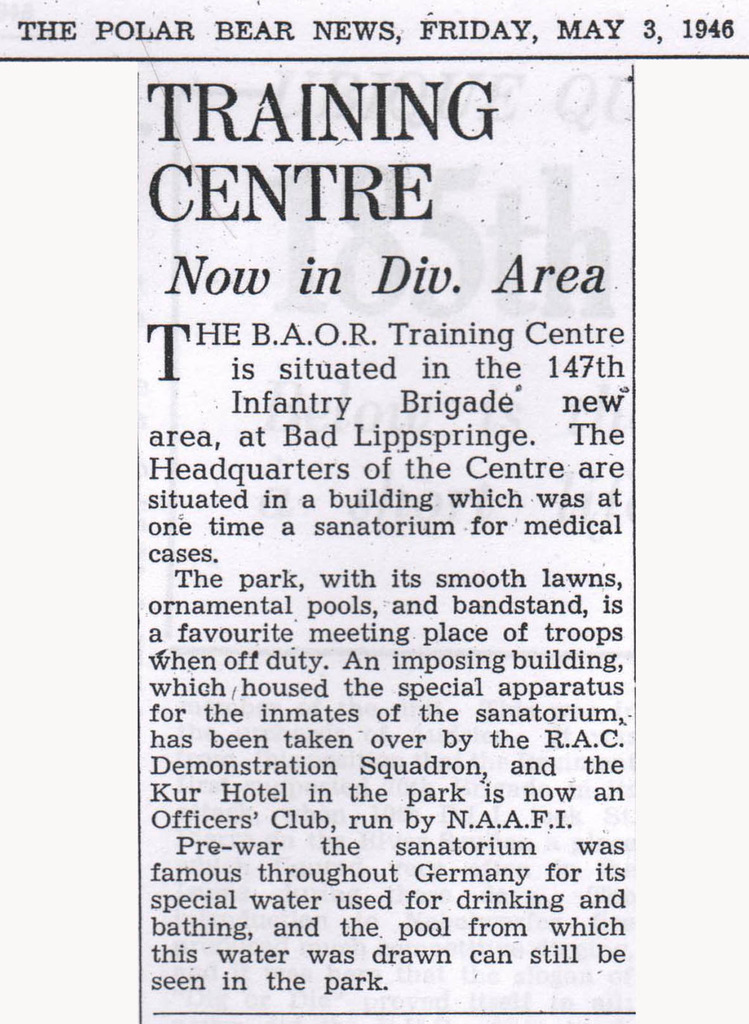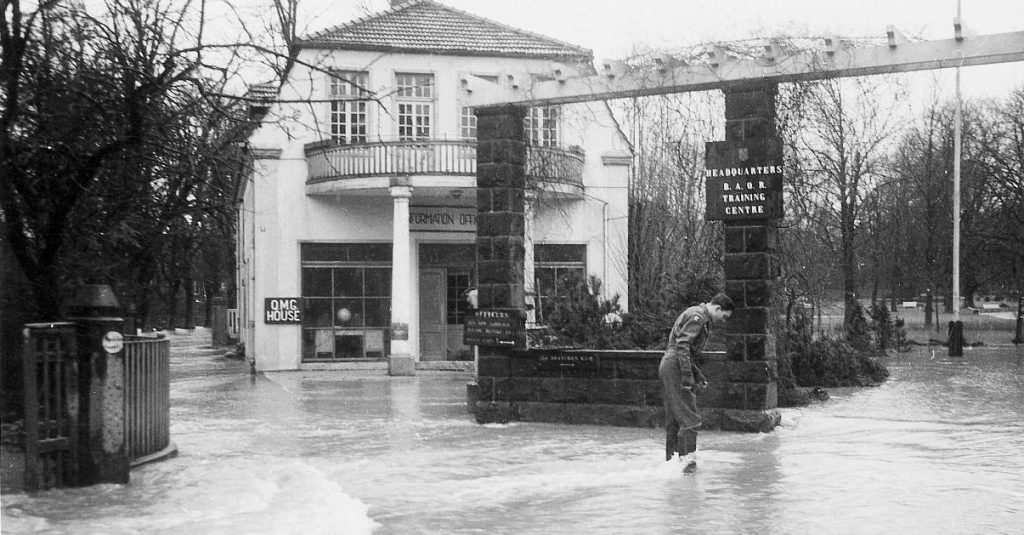
Updated 11 October 2024
Bad Lippspringe was the responsibility of the following higher formations:
3rd Infantry Division 29 May 45
52nd (Lowland) Infantry Division 16 Aug 45
49th (West Riding) Infantry Division 19 Apr 46
7th Armoured Division 21 Oct 46
BAOR Training Centre 28 Jul 47
Hannover District 15 Jan 48
7th Armoured Division 1 Mar 49
Requisitioned civilian accommodation area Friedrichstraße
RHQ 7th Field Regiment RA 1945 (1)
RHQ 79th (Lowland) Field Regiment 1945 (2)
HQ 52nd Divisional Artillery Brigade 1945-1946 (3)
HQ 147th Infantry Brigade 1946 (4)

Requisitioned civilian accommodation – Arminius Park
21st Army Group Training Centre 1945-1948 (5)
Second Army Defence Company 1945-1946 (6)
HQ 7th Armoured Brigade 1948-1949 (7)

(1) arrived from Bad Essen north-east of Osnabrück 29 May 45 – moved to Belgium 17 Aug 45
(2) arrived from Belgium 16 Aug 45 – moved to Delbruck north-west of Paderborn 23 Oct 45
(3) arrived from Delbrück north-west of Paderborn 23 Oct 45 – moved to alternative accommodation 17 Apr 46 – disbanded 5 May 46
(4) arrived from Hagen-Emst west of Iserlohn 18 Apr 46 – disbanded 29 Oct 46
(5) arrived 21 Jun 45 – redesignated British Army of the Rhine Training Centre 24 Aug 45 – Normandy Barracks Sennelager 26 Sep 45 – continued to be used until disbandment 15 Sep 48 – replaced by All Arms Training Centre formed Normandy Barracks Sennelager 1 Sep 48
(6) arrived from Bünde 23 Jul 45 – Hotel Wagner disbanded 30 Oct 46
(7) arrived from Warendorf east of Münster 20 Sep 48 – moved to Soltau
More to follow
Source: 21st Army Group later British Army of the Rhine to 1 Mar 49
Part II
HQ 33rd Armoured Brigade 1951-1956 (8)
30 Field Ambulance RAMC 1952
(8) The Brigade relocated to Bad Lippsringe during 1951, was part of 11th Armoured Division which initially consisted of 5th Inniskilling Dragoons Guards (Paderborn); 1st Royal Tank Regiment (Detmold); and 1st Bn King’s Royal Rifle Corps. It later consisted of 9th Lancers (Detmold); 1st Royal Tank Regiment (Detmold); 8th Royal Tank Regiment (Paderborn) and 1 Bn King’s Royal Rifle Corps. In 1956, it moved to Sennelager and on the 1st of April 1956, the Brigade was replaced by the 10th Infantry Brigade and went into suspended animation.
All I can remember of the place is that in 1951/2 during my service in the Royal Signals attached to 1st R.T.R at Detmold, Bad Lippspringe was the Signals Brigade HQ. Periodically we had to attend training courses there. We used to hate it because of the preparation involved. The Royal Signals used khaki green blanco on all our webbing, packs, straps, belts etc. but with the Tankies we had to use buff blanco, so every move involved a scrub down and a re-blancoing of every piece of kit. Whilst with RTR we wore their red lanyard on our left shoulder and the Signals blue lanyard on our right and I remember the RSM at Lippspringe having apoplexy when I forgot to remove the red lanyard before going there. The only other thing I recall is that there was an open air swimming pool within walking distance of the barracks at Lippspringe situated on the edge of a pine forest. It was very pleasant there.
Marjal
Bad Lippspringe (BFPO 16) had more than one British army one unit stationed there (one was possibly a tank or armoured unit?). My father was the RASC transport Officer at one of them, from 1952 to 1953. The unit was: 30 Field Ambulance RAMC Location was behind a large public forested park on Ceclellen Allee. Today this former site is now known as “Klink am Park”. Within the town there was a NAAFI., this was within a British military compound. The closest Army Kinema Corporation (AKC) cinema, was the “Globe Cinema” Paderborn.
John O`Meara (ex AKC 1959-65)
